French source text:
Ce qui paraissait si simple – dresser la chronologie des trente dernières années de la société française – constitue-t-il une entreprise impossible ?
On ne se fait pas faute de suspecter les contemporanéistes de quelque paresse : ils auraient choisi cette période parce qu’ils ne lisent ni le grec, ni le latin, parce qu’ils ignorent la numismatique, l’épigraphie et le maniement du carbone 14, parce que – souffrant d’une carence imaginative – ils ne peuvent concevoir d’autres systèmes de valeurs que ceux qui s’affrontent sous leur regard, etc. Ils peuvent se défendre par bien des arguments dont le plus trivial n’est sans doute pas le plus faible : à savoir, qu’ils ne disposent pas des interprétations de leurs prédécesseurs, puisque 1975, hier même, c’est déjà de l’histoire (et l’on sait qu’en histoire comme ailleurs, l’art et l’habileté des copistes ont survécu aux inventions de Gutenberg). Comme ses confrères, spécialistes de temps plus anciens, l’historien contemporanéiste doit être un peu linguiste, un peu statisticien, un peu démographe, un peu ethnologue (en savoir suffisamment pour rédiger son questionnaire) mais il lui appartient de franchir les frontières de la sociologie, de la science politique, ce qui ne va pas sans effort et sans risque, tant il est vrai que la défense du territoire n’est pas le propre des animaux sociaux. Cependant son problème majeur reste l’énormité de son corpus. Même si son choix se porte sur une étude ponctuelle apparemment bien limitée, de proche en proche, de jour en jour, d’une idée à l’autre, d’une hypothèse à un fait (ou à une série de faits) il voit croître son corpus. Un exemple simple permettra de saisir la redoutable dynamique de cette sédimentation. Soit l’étude de la genèse, de la production et l’exécution d’une loi. L’approche textuelle mobilise déjà linguistique, lexicologie, méthode analytique (ce qui est dit, ce qui est tu). Elle s’efforce de dégager la portée idéologique du message (ce qui est relativement simple) mais aussi celle du contenant (ce qui l’est déjà moins, l’ambiguïté éventuelle de la formulation pouvant procéder soit de la négligence du rédacteur soit du projet calculé de produire un texte susceptible d’une pluralité d’interprétations). La loi elle-même est l’aboutissement de lentes mutations et transformations des mentalités et des mœurs qui ont, implicitement ou explicitement, constitué une sorte d’appel au législateur et qu’il conviendra d’appréhender, à travers les sondages, la presse écrite, parlée, télévisée, etc. Dans quelles conditions la loi a-t-elle été votée ? L’initiative était-elle gouvernementale ou parlementaire ? Dans le second cas, venait-elle de la majorité ou de l’opposition ? Quel fut le rôle des commissions parlementaires ? Comment se sont déroulés les débats (donc analyse systématique des pratiques discursives des intervenants) ? Quels amendements furent proposés, repoussés, adoptés ?
English target text:
Although it would appear to be quite a simple task, is it impossible to draw up a chronology of French society over the past three decades?
There is a great tendency to suspect contemporary historians of a certain laziness - they might have chosen this era because they cannot read Greek or Latin, know nothing about numismatics, epigraphy or how to handle carbon dating. Maybe - due to lack of imagination - they cannot conceive of value systems other than those they themselves see clashing before their eyes, etc. They can defend their case with many arguments, of which the most trivial is indeed not the least, namely that they admittedly do not have the interpretations of their predecessors at hand, as 1975 and even yesterday are already history (and we know that in history as well as other subject matters, the art and skill of transcribers have survived Gutenberg's inventions). Like his colleagues, specializing in more ancient times - the contemporary historian has to be something of a linguist, a statistician, a demographer and an ethnologist with at least enough knowledge of these activities to be able to draw up his questionnaire. But he must cross the boundaries of sociology and of political science, which does entail a certain amount of effort and risk taking, as it is true that social animals are not alone in defending their territory. However, his major problem remains the sheer size of his corpus. Even though he might have chosen a specific subject to study - with apparent boundaries - gradually, day by day, from one idea to the other, from hypothesis to fact (or series of facts), his corpus grows. A simple example may help to grasp the formidable dynamic of this sedimentation. Let us take the case of the study of the genesis, production and enforcement of a law. The textual approach already requires linguistics, lexicology and analytical method (what is said and what is not). The study endeavours not only to highlight the ideology of the message - this being relatively simple - but also that of the form, this being less obvious to do. The possible ambiguity of the wording could be due either to the writer's negligence or to it being a calculated plan to produce a text likely to have several interpretations. The law itself is the outcome of slow changes and transformations of mentalities and changes in attitudes, which have, implicitly or explicitly, in a way, called out for the legislator. These changes have to be perceived with the help of media such as polls, written and the press, radio and television, etc. Questions have to be raised, such as the conditions in which the law was passed, and whether it was proposed by the government or parliament. In the latter case, it has to be established if the proposal came from the majority or the opposition, and what the role of the parliamentary committees was. The way the debate went has to be considered (involving the systematic analysis of the discourse of the contributors), as well as which amendments were proposed, rejected, and passed.
 True words translations
True words translations